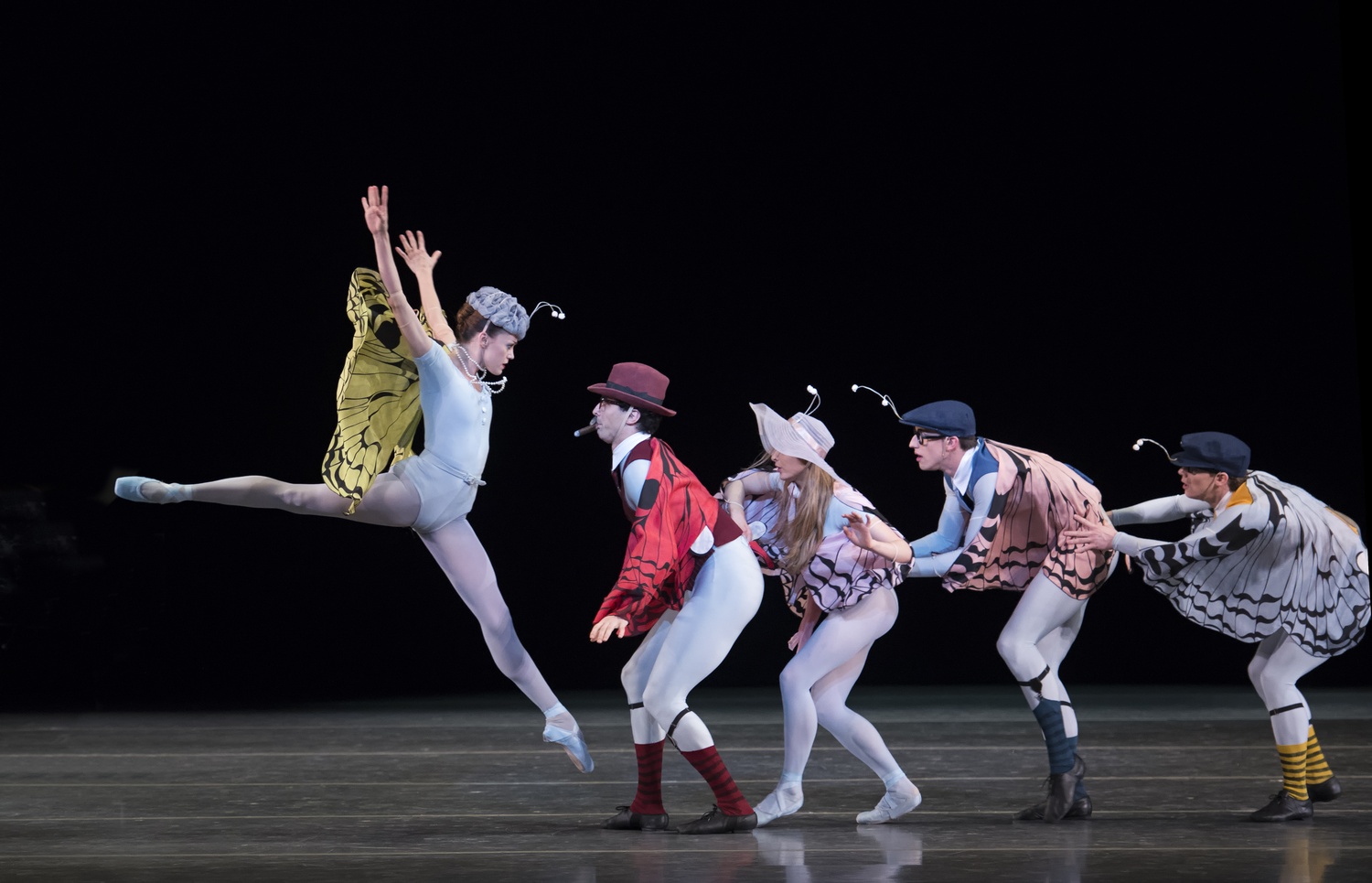
News
Summers Will Not Finish Semester of Teaching as Harvard Investigates Epstein Ties

News
Harvard College Students Report Favoring Divestment from Israel in HUA Survey

News
‘He Should Resign’: Harvard Undergrads Take Hard Line Against Summers Over Epstein Scandal

News
Harvard To Launch New Investigation Into Epstein’s Ties to Summers, Other University Affiliates

News
Harvard Students To Vote on Divestment From Israel in Inaugural HUA Election Survey
Boston Ballet Pushes the Limits with "Thrill of Contact"
Beneath a glimmering chandelier and diaphanous drapery, choreographer George Balanchine’s “Theme and Variations” sets the stage for the Boston Ballet’s May program, “Thrill of Contact.” The piece has all the constituent elements of a classical ballet—crystals, tutus, and Tchaikovsky—and yet the choreography, a masterful mix of undulating formations and impossibly nimble solos, establishes that this show is anything but normal. “Thrill of Contact” offers up a little bit of everything, from the classical to the avant-garde, from the campy to the brand new, in a program that pushes the boundaries of what ballet looks like.
Beginning on a deceptively traditional note, “Theme and Variations” showcases a series of beautifully choreographed and masterfully executed company sections, with dancers bourréeing in rapid succession, weaving through one another—visually reminiscent of an undulating fountain. True to the classical corps, the company dancers’ lines, both in limbs and placement, hit such uniform positions that, from just the right angle, all the perfectly aligned dancers appear to be a single body moving across the space.
Balanchine pairs the slower company sections with his uniquely stylistic solos, highlighting the dancers’ precision and athleticism. Through mind-boggling aerobic motions, true to the Balanchine tradition, soloist Lasha Khozashvili showcases an impressive eight double tours in succession. But the true standout solo comes from Lia Cirio, who executes her petit allegro with such sharpness and precision that every note of Tchaikovsky seems to receive its own new move as she toes the line between the military and the balletic, the regimented and the beautiful.
However, the program soon takes a turn towards the unconventional with the world premiere of Jeffery Cirio’s original piece, “fremd,” which showcases soloist John Lam in an avant-garde ballet about “the foreign, alien, strange, or different.” Set to a clash of traditional and abstract music ranging from the harmonic to the purely mechanical, Cirio creates a futuristic world of strobe lights, sharp hand motions, and spoken word that moves the dancers while implicating the audience in a sense of estrangement and the unknown. Most startling is the ending, set entirely in silence as Lam dances in Cirio’s signature visceral yet sharp dance style, lets out a silent scream, and steps out of his spotlight for the first time when the curtain drops.
“The Vertiginous Thrill of Exactitude,” cleverly positioned after Balanchine and Cirio, draws the mood back toward a middle ground between the classical and the progressive. Even for an artist known for his radically iconoclastic, deconstructionist style, choreographer William Forsythe breaks from the ordinary, pairing one of his more conventional ballets with strikingly unorthodox costumes. With music by Franz Schubert and exceptional pointe work, “Vertiginous Thrill” might feel like a classical ballet to the untrained eye, but Forsythe’s backless, velvet unitards remind the audience of the piece’s nonconventional nature and actually contribute the the dance’s overall success. Soloist Dusty Button executes a series of beautiful fouetté turns and, in her razor thin tutu, seems to stay in place as her seamless Judy Jetson-esque dress rotates around her, entirely separate from her body—a visual illusion that can only be described as a vertiginous thrill.
Finally, Jerome Robbins’s “The Concert (or, The Perils of Everybody)” questions the role of dance, parodying both the audience and classical ballet. The humorous piece opens on a live piano concert, in which the dancers all enter as audience members dressed in exaggerated outfits, complete with floppy hats, newspapers, and cigars. True to the traditional ballet structure, these dancers all play specific characters and interact with one another in gendered pas de deux and large company numbers. The piece plays off of these tropes, using slapstick moments, awkward lines, and outlandish partner lifts to make fun of both the highly structured nature of the classical ballet and stuffy audience reactions to it.
The Boston Ballet ends “Thrill of Contact” on this campy, laugh-out-loud note, cleverly juxtaposing it with its beautifully classical Balanchine opener with the ultimate goal of questioning the audience’s definition of dance. What is dance supposed to be? Is it meant to be evocative, humorous, traditional, or somewhere in between? How is one to watch, interpret, and appreciate ballet? While no answers are explicitly given, “Thrill of Contact” is spectacularly successful in presenting all of the above and more through its cleverly constructed and beautifully executed May program.
— Staff writer Mason S. Hsieh can be reached at mason.hsieh@thecrimson.com.
Want to keep up with breaking news? Subscribe to our email newsletter.

